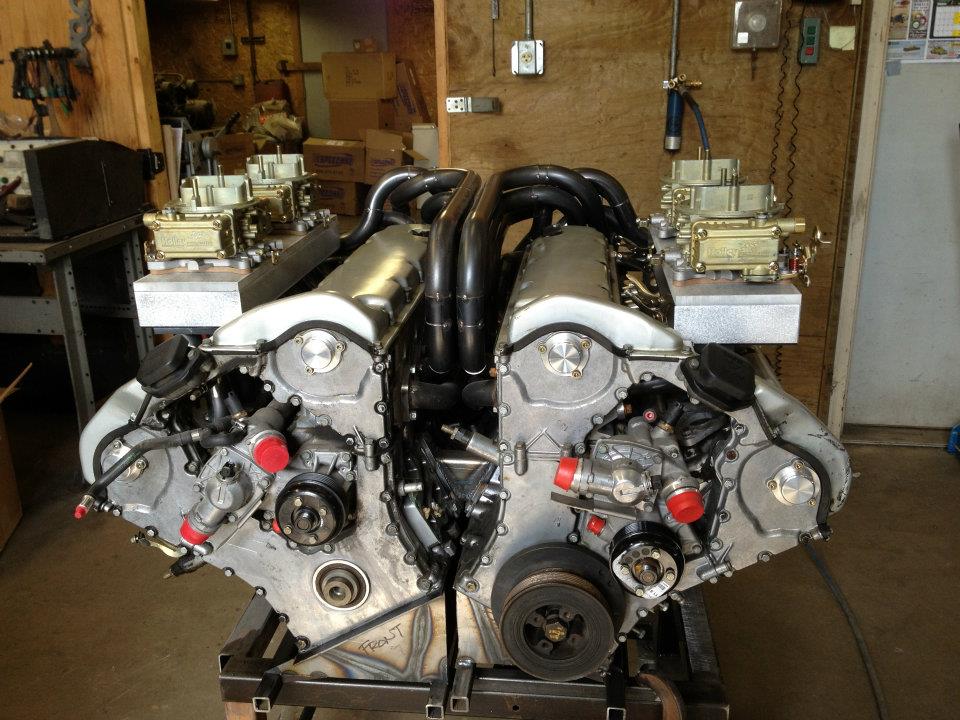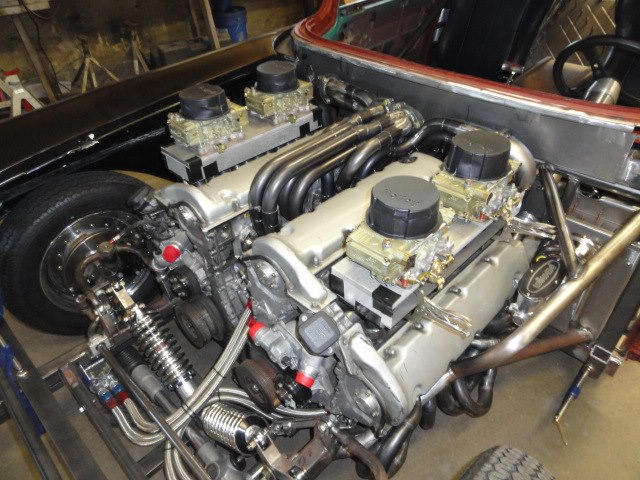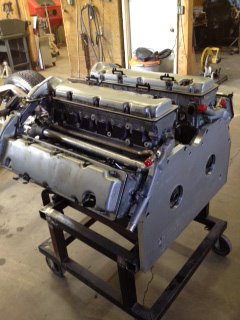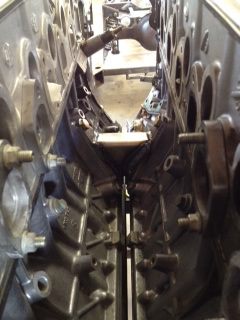Edited by: Mike Oswald
We kicked around various ideas for power in the new car and came to the conclusion that anything less than
12 cylinders would be insufficient.We'd already used the big BPM in the '55 and Gary wanted something different
for the next car. Being a fan of BMW engines, he suggested the 5.4 liter M73 V12. I agreed that this would be a
fine power plant but with less than half the displacement of the BPM, the necessary “outrageous” factor wasn't there.
Half in jest, I suggested we use two of them. Gary asked if that was possible and I said “yes”. Thus was born the concept
for the engine package we would come to call the “W24”.

Gary actually had an engine out of a 750 that had suffered an engine fire. It was a bit toasted, but suitable for
determining dimensions. . . that's dimensions – not dementia. The dementia had already been established by our
previous behavior. The 60 degree V and SOHC design provided a narrow package. The relatively small displacement (relative to
the 12 liter BPM) kept the length manageable.
Now that I'd opened my big mouth and told Gary that putting two engines in the car was possible, I now had to figure We determined that canting each engine 30 degrees away from each other (and then sliding them together as close as possible)
Once we had a workable plan, Gary located two low mileage takeout engines and the fun began in earnest. A fixture was built to Custom oil pans are being built to conform to the 30 degree cant of the engine blocks. The oil filters have been remotely mounted If you would like to add any comments, remarks and/or corrections to this article, feel free to email Mike Oswald and we'll put it on our site. Share your experiences with us so others may benefit from it.
out how to do it. There are at least three potential layouts for a twin engine package: There's two in a row, one in front
and one in back, and side by side. Side-by-side is generally how twin engine boats are configured and that was the only practical
layout for Gary's '57.

would bring the crankshafts 12 inches apart and provide 5 inches of clearance between the cylinder heads. That allowed for a
compact connecting gearbox and enough room between the heads for the center twelve header tubes (as well as spark plug access).

temporarily hold the engines in place. We called on Bob Bendsten of Bendsten's Transmission / Speed Gems in Ham Lake Minnesota.
Bob took measurements and machined a 1 inch thick aluminum plate to tie them together at the rear. I built a connector off the stock motor
mount pads on the facing sides of the engines to hold them together at the mid-point. These two connecting rods will be sufficient to hold
the engines in place.
among the front suspension in a place where they're easily accessible and won't drip on anything when changed.